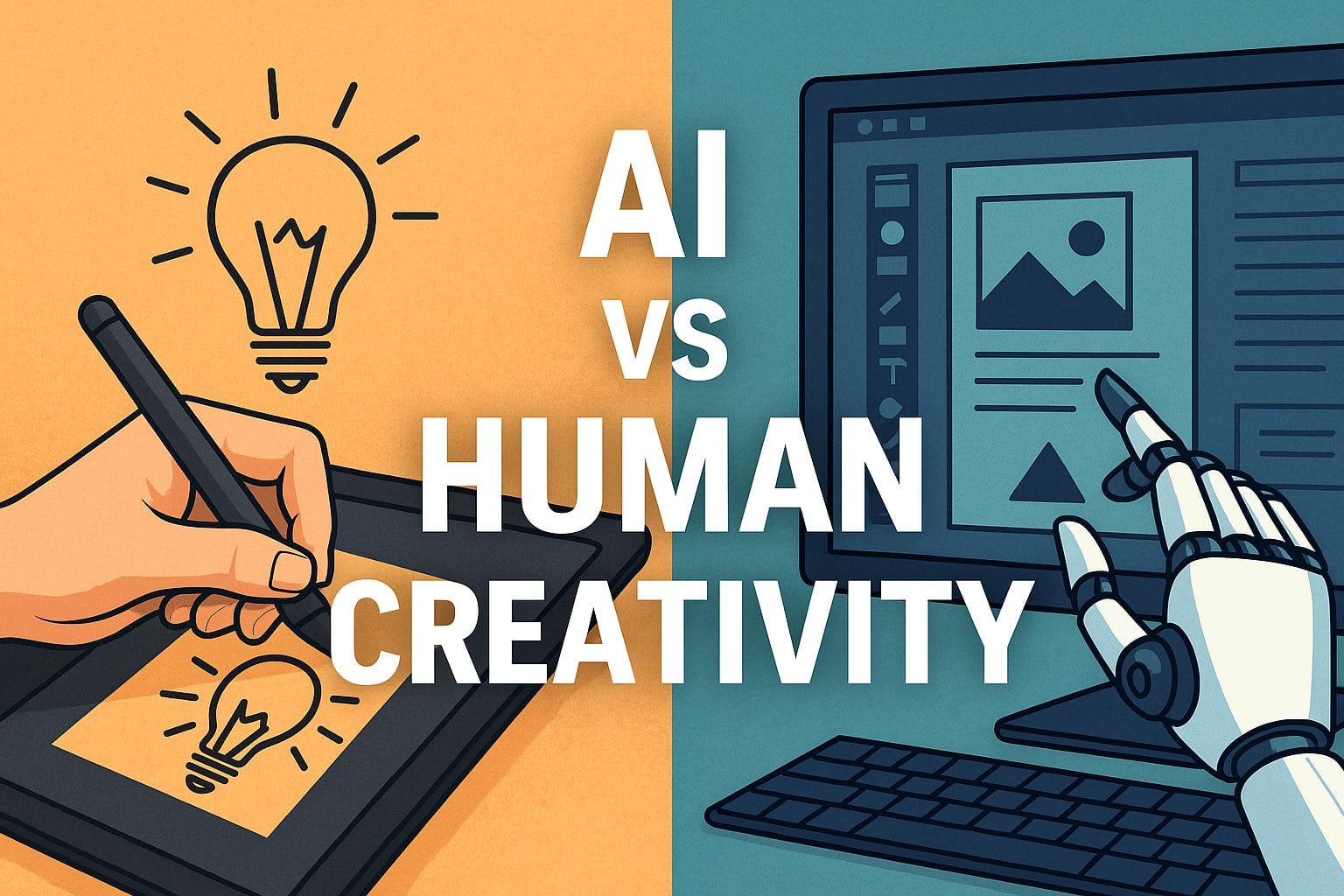To analyze and evaluate whether AI can replace graphic designers, we need to dive deeper into the details:
- What is AI doing?
- How does AI work?
- And what can humans do that AI cannot?
AI Taking Over
Today, all over the internet, ever since the launch of ChatGPT on November 30, 2022, the world has gone into a frenzy over AI development and the race to advance it.
Every company, in nearly every industry, is now looking to integrate AI into their services. This has led to a global shift toward an AI-driven era, leaving almost no area untouched by the presence of AI.
This transformation will undoubtedly bring major changes across industries and the services they provide.
That said, one cannot ignore the rise of AI — it is essential to prepare for the coming changes and adapt accordingly.
👉 According to the McKinsey State of AI 2024 Report, 65% of organizations globally are now using generative AI.
How AI Works
I will break this point down into simple and very easy terms.
The way AI works is based on tokens. Let’s imagine we have 5 tokens. Each of these tokens contains different types of data.
Now, let’s put a question:
Suppose the information about the color white is stored in the 5th token. If we ask the system, “Where is white stored?”, the AI will check all 5 tokens and respond:
“White is stored in the 5th token.”
This is a basic example of how AI works. The more tokens and data the system has, the more “intelligent” or capable it can become — because it can search through more patterns and information.
I have explained this in a very simple way to help anyone without a technical background understand the idea. In reality, AI’s inner workings are far more complex and involve deep learning models and the Transformer architecture, which allows AI to process large amounts of data through a mechanism called self-attention.
Additionally, tools like OpenAI’s tokenization system explain how AI models break language into manageable parts.
AI vs Human
AI works on trillions of tokens, patterns, and data, while the human brain works on neurons, like a sponge interconnected with billions of tiny “wires” or cables.
Below, let’s differentiate AI and the Human Brain.
| AI | Human Brain |
|---|---|
| Works on tokens and patterns, where data is stored in tokens. | The human brain is like a sponge, where billions of neurons are interconnected like wires or cables, storing information and data. |
| Does not think, feel, or have emotions. | The human brain thinks, feels, and experiences emotions. |
| Learns from massive amounts of data, which is then stored in patterns and tokens, similar to a mesh inspired by the structure of neurons. | The human brain learns from experiences, applying emotions and feelings to store data in neurons, forming memories like a sponge. |
| No true creativity — only produces answers from existing data or remixes of existing information. | Creativity comes from feelings, thinking, emotions, and experiences, which are applied to responses or actions. |
At the current stage of AI, we are operating within a system of tokens, patterns, and data spots.
This is where AI still lags behind humans — especially when processing responses that require real creativity.
Creativity is the key area where AI currently lacks, and this is where AI may ultimately fall short compared to the human mind.
👉 A recent study on AI’s creative limitations shows that while AI can produce novel outputs, it often lacks genuine innovation or emotional depth.
Answering the Question: Can AI Replace Graphic Designers?
At the current stage of AI technology, AI works by breaking information into tokens (small pieces), spotting patterns, and using these patterns to process and respond to questions.
AI can replace humans in tasks where answers can be created by remixing and reusing existing data.
For example, AI can assist in creating basic templates, social media graphics, or stock imagery.
However, AI cannot replace humans when true creativity is needed to:
- Solve new problems
- Develop original concepts
- Create emotionally impactful designs
Right now, AI does not truly understand — it simply uses stored data to generate responses based on patterns it has seen.
👉 How ChatGPT generates answers explains that large language models like GPT simply predict the most likely next word or token based on training data.
The simple answer is:
No, AI cannot replace graphic designers when it comes to creativity — at the current level of technology.
What if AI Achieves Self-Learning Like Humans? Can it Replace Humans in Creativity?
Nothing is truly impossible — the only limitation is our current lack of knowledge. Anything can be achieved, even if it seems impossible today.
The universe is designed in such a way that what seems impossible can become possible if we gain the necessary knowledge and understanding.
At this moment, AI cannot replace humans in creativity.
However, if we develop new systems or algorithms that allow AI to function more like the human brain, then yes — it is possible that AI could eventually replace humans in certain creative areas.
This would be the point where AI can:
- Learn and train itself
- Continuously update, upgrade, and develop without human intervention
- Resolve its own issues
- Fix system errors
- Repair malfunctions
- Evolve independently
In this scenario, AI would become:
- Self-repairing
- Self-fixing
- Self-learning
- Self-understanding
— no longer dependent on humans.
I believe this is not impossible — but it will require significant time, knowledge, and technological breakthroughs to reach that level.
Final Thoughts
In conclusion: while AI is powerful and advancing rapidly, it is not yet capable of replacing graphic designers when it comes to creativity, emotional understanding, and true innovation.
For now, the human touch remains irreplaceable in the creative field.
